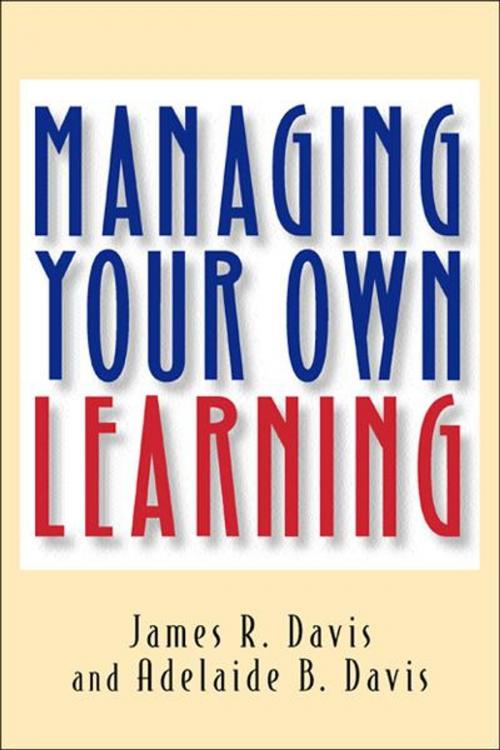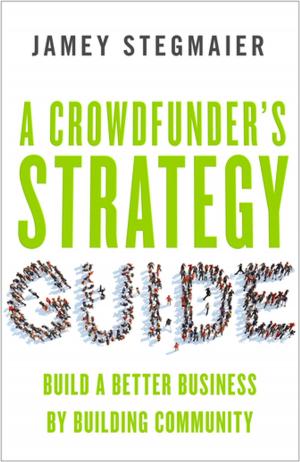Managing Your Own Learning
Nonfiction, Reference & Language, Education & Teaching, Educational Theory, Adult & Continuing Education| Author: | James R. Davis, Adelaide B. Davis | ISBN: | 9781609946104 |
| Publisher: | Berrett-Koehler Publishers | Publication: | February 11, 2000 |
| Imprint: | Berrett-Koehler Publishers | Language: | English |
| Author: | James R. Davis, Adelaide B. Davis |
| ISBN: | 9781609946104 |
| Publisher: | Berrett-Koehler Publishers |
| Publication: | February 11, 2000 |
| Imprint: | Berrett-Koehler Publishers |
| Language: | English |
Describes seven major ways of learning and shows how each can best be used to maximize self-directed learning Provides a step-by-step guide to assessing previous learning and designing an action plan for future learning Reveals how to expand opportunities for learning and use libraries and the Internet more effectively As the pace of change in the workplace continues to accelerate, individuals are under more pressure to learn new things than ever before. While most people realize they have more to learn, many have trouble translating that anxious need into purposeful action. Managing Your Own Learning demonstrates how to analyze previous learning, design an action plan for future learning, expand opportunities for learning, and use libraries and the Internet effectively to become a lifelong learner. James and Adelaide Davis detail seven major ways of learning: learning new skills, learning from presentations, learning to think, learning to solve problems and make decisions, learning in groups, learning through virtual realities, and learning from experience. They also provide useful guidelines for maximizing results by becoming an effective, active participant in learning. They explain, for example, how learning in a group can be enhanced by knowing how a group works and considering factors such as group size, cohesion, task and process behavior, and participant roles, as well as the things that can go wrong in groups, such as conflict and apathy. For each of the seven ways of learning, the authors tell what is unique about it, how learning actually takes place, and how it can be augmented in each situation. They reveal how the theory behind each way of learning originated, what researchers have learned about it, and what the individual's role is as a participant. And at the end of each chapter, they include a list of ten things that anyone can do to get the most from that particular type of learning. No matter what our previous experiences with learning may have been, we all must become self-directed learners if we are to succeed in this new era. Managing Your Own Learning provides step-by-step, proven advice on how to succeed in the 21st century workplace by becoming a proactive, goal-directed, perpetual learner.
Describes seven major ways of learning and shows how each can best be used to maximize self-directed learning Provides a step-by-step guide to assessing previous learning and designing an action plan for future learning Reveals how to expand opportunities for learning and use libraries and the Internet more effectively As the pace of change in the workplace continues to accelerate, individuals are under more pressure to learn new things than ever before. While most people realize they have more to learn, many have trouble translating that anxious need into purposeful action. Managing Your Own Learning demonstrates how to analyze previous learning, design an action plan for future learning, expand opportunities for learning, and use libraries and the Internet effectively to become a lifelong learner. James and Adelaide Davis detail seven major ways of learning: learning new skills, learning from presentations, learning to think, learning to solve problems and make decisions, learning in groups, learning through virtual realities, and learning from experience. They also provide useful guidelines for maximizing results by becoming an effective, active participant in learning. They explain, for example, how learning in a group can be enhanced by knowing how a group works and considering factors such as group size, cohesion, task and process behavior, and participant roles, as well as the things that can go wrong in groups, such as conflict and apathy. For each of the seven ways of learning, the authors tell what is unique about it, how learning actually takes place, and how it can be augmented in each situation. They reveal how the theory behind each way of learning originated, what researchers have learned about it, and what the individual's role is as a participant. And at the end of each chapter, they include a list of ten things that anyone can do to get the most from that particular type of learning. No matter what our previous experiences with learning may have been, we all must become self-directed learners if we are to succeed in this new era. Managing Your Own Learning provides step-by-step, proven advice on how to succeed in the 21st century workplace by becoming a proactive, goal-directed, perpetual learner.















